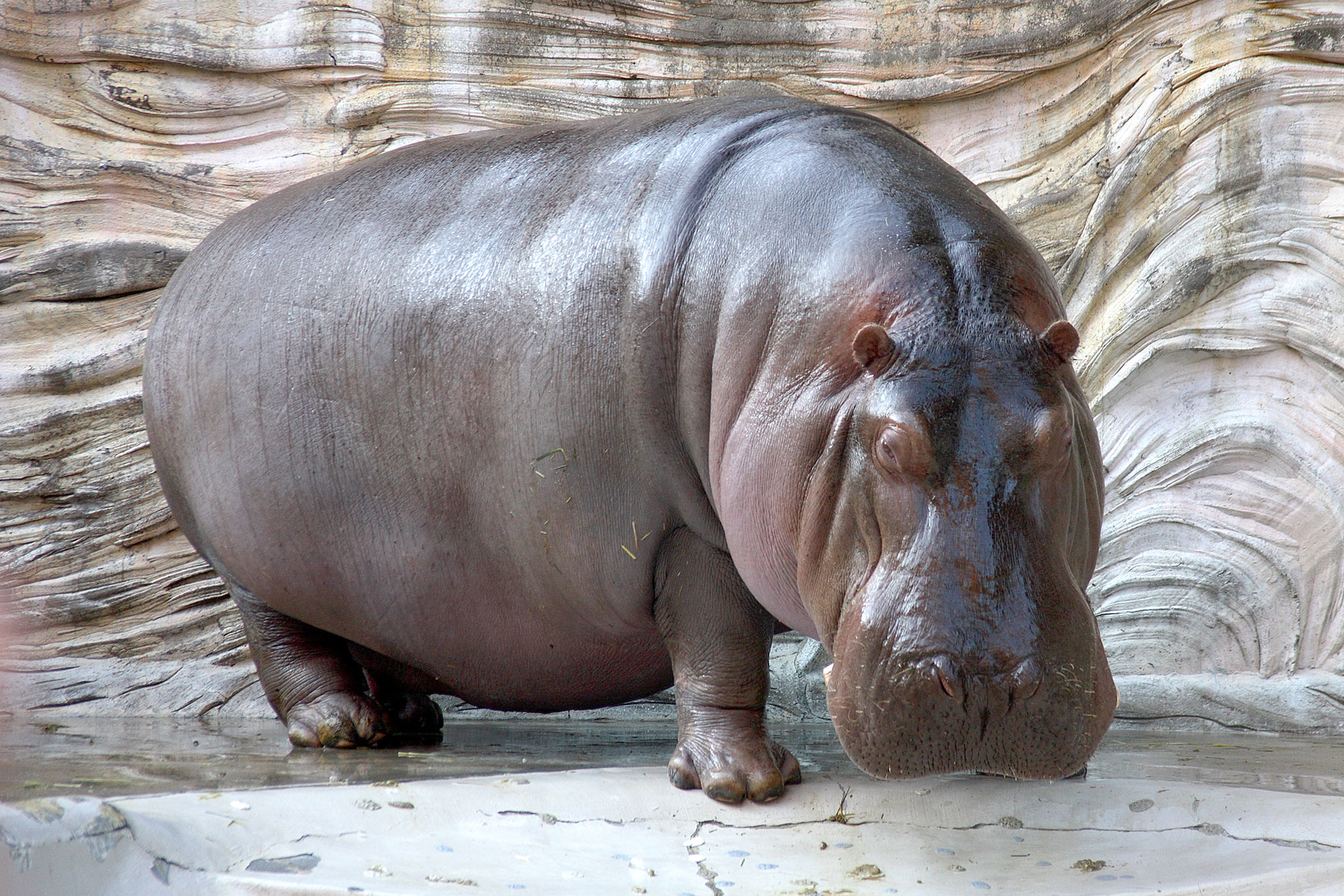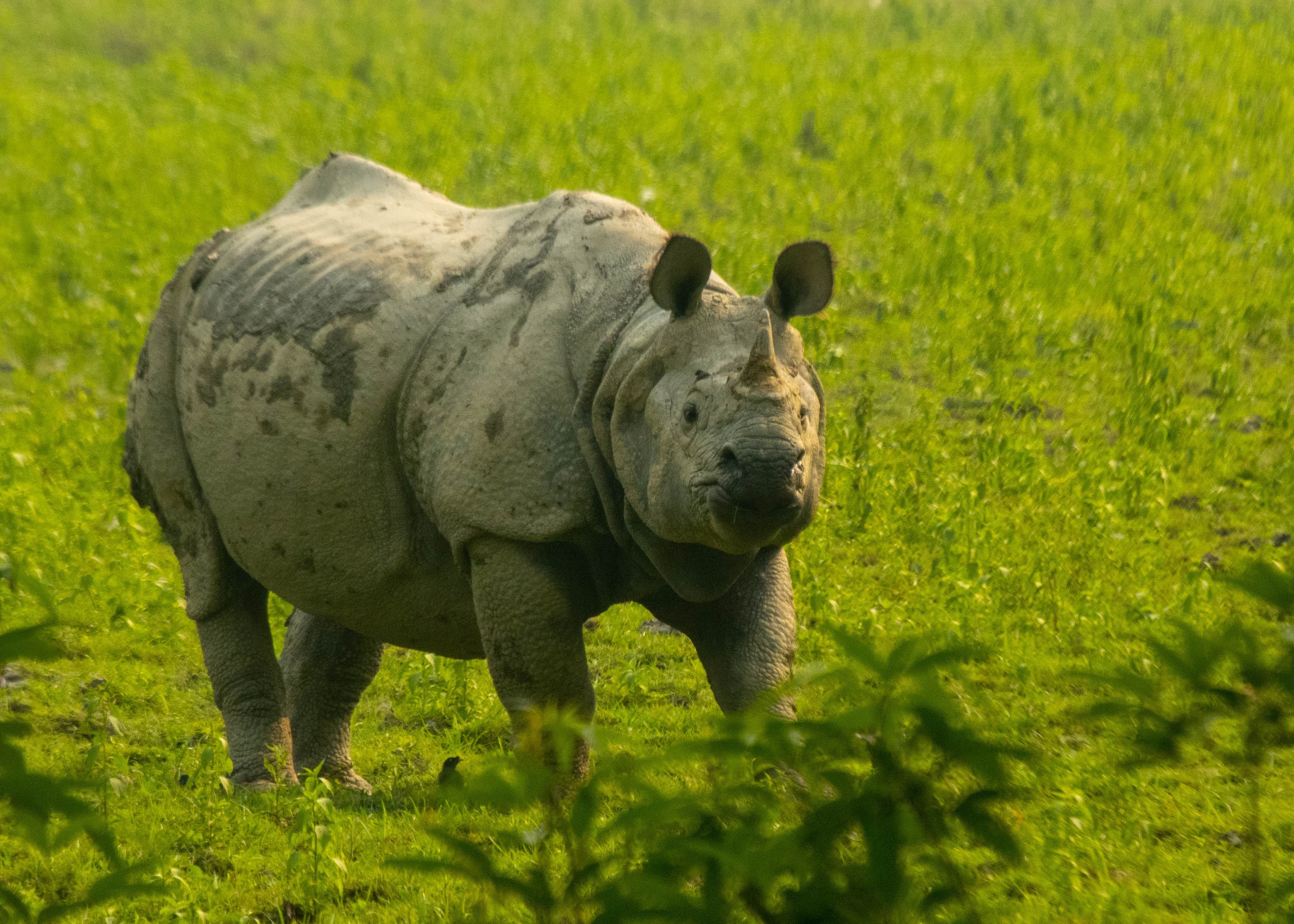|
Pseudoruminant
Pseudoruminant is a classification of animals based on their digestive tract differing from the ruminants. Hippopotamidae, Hippopotami and camels are ungulate mammals with a three-chambered stomach (ruminants have a four-chambered stomach) while Equidae, equids (horses, Asinus, asses, zebras) and rhinoceroses are monogastric herbivores. Anatomy Like ruminants, some pseudoruminants may use foregut fermentation to break down cellulose in fibrous plant species (while most others are hindgut fermentation, hindgut fermenters with a large cecum). But they have three-chambered stomachs (while others are monogastric) as opposed to ruminant stomachs which have four compartments. Species See also * Ruminant, Traditional ruminant References {{reflist Mammal taxonomy Animal anatomy Herbivorous mammals ... [...More Info...] [...Related Items...] OR: [Wikipedia] [Google] [Baidu] |
Ruminant
Ruminants are herbivorous grazing or browsing artiodactyls belonging to the suborder Ruminantia that are able to acquire nutrients from plant-based food by fermenting it in a specialized stomach prior to digestion, principally through microbial actions. The process, which takes place in the front part of the digestive system and therefore is called foregut fermentation, typically requires the fermented ingesta (known as cud) to be regurgitated and chewed again. The process of rechewing the cud to further break down plant matter and stimulate digestion is called rumination. The word "ruminant" comes from the Latin ''ruminare'', which means "to chew over again". The roughly 200 species of ruminants include both domestic and wild species. Ruminating mammals include cattle, all domesticated and wild bovines, goats, sheep, giraffes, deer, gazelles, and antelopes.Fowler, M.E. (2010).Medicine and Surgery of Camelids, Ames, Iowa: Wiley-Blackwell. Chapter 1 General Biology and ... [...More Info...] [...Related Items...] OR: [Wikipedia] [Google] [Baidu] |
Hindgut Fermentation
Hindgut fermentation is a digestive process seen in monogastric herbivores (animals with a simple, single-chambered stomach). Cellulose is digested with the aid of symbiotic microbes including bacteria, archaea, and eukaryotes. The microbial fermentation occurs in the digestive organs that follow the small intestine: the cecum and large intestine. Examples of hindgut fermenters include proboscideans and large odd-toed ungulates such as horses and rhinos, as well as small animals such as rodents, rabbits and koalas. In contrast, foregut fermentation is the form of cellulose digestion seen in ruminants such as cattle which have a four-chambered stomach, as well as in sloths, macropodids, some monkeys, and one bird, the hoatzin.. Cecum Hindgut fermenters generally have a cecum and large intestine that are much larger and more complex than those of a foregut or midgut fermenter. [...More Info...] [...Related Items...] OR: [Wikipedia] [Google] [Baidu] |
Hippopotamus - 04
The hippopotamus (''Hippopotamus amphibius;'' ; : hippopotamuses), often shortened to hippo (: hippos), further qualified as the common hippopotamus, Nile hippopotamus and river hippopotamus, is a large semiaquatic mammal native to sub-Saharan Africa. It is one of only two extant species in the family Hippopotamidae, the other being the pygmy hippopotamus (''Choeropsis liberiensis'' or ''Hexaprotodon liberiensis''). Its name comes from the ancient Greek for "river horse" (). After elephants and rhinoceroses, the hippopotamus is the next largest land mammal. It is also the largest extant land artiodactyl. Despite their physical resemblance to pigs and other terrestrial even-toed ungulates, the closest living relatives of the hippopotamids are cetaceans (whales, dolphins, porpoises, etc.), from which they diverged about 55 million years ago. Hippos are recognisable for their barrel-shaped torsos, wide-opening mouths with large canine tusks, nearly hairless bodies, pillar-like l ... [...More Info...] [...Related Items...] OR: [Wikipedia] [Google] [Baidu] |
Mammal Taxonomy
Mammalia is a class of animal within the phylum Chordata. Mammal classification has been through several iterations since Carl Linnaeus initially defined the class. No classification system is universally accepted; McKenna & Bell (1997) and Wilson & Reader (2005) provide useful recent compendiums. Many earlier ideas from Linnaeus et al. have been completely abandoned by modern taxonomists, among these are the idea that bats are related to birds or that humans represent a group outside of other living things. Competing ideas about the relationships of mammal orders do persist and are currently in development. Most significantly in recent years, cladistic thinking has led to an effort to ensure that all taxonomic designations represent monophyletic groups. The field has also seen a recent surge in interest and modification due to the results of molecular phylogenetics. George Gaylord Simpson's classic "Principles of Classification and a Classification of Mammals" ( Simpson, 1945) t ... [...More Info...] [...Related Items...] OR: [Wikipedia] [Google] [Baidu] |
Oryctolagus Cuniculus Tasmania 2
''Oryctolagus'' () is a genus of lagomorph that today contains the European rabbit and its descendant, the domestic rabbit, as well as several fossil species. The generic name derives from (, “dug up”) and (, “hare”). Evolution ''Oryctolagus'' first appeared at the end of the Miocene, around 6.5 MYA. Fossil remains from the middle Pliocene led to the recognition of two species, ''Oryctolagus lacosti'' in southern France and northwestern Italy and ''Oryctolagus laynensis'' in the Iberian Peninsula. This latter form is thought to be the origin of the extant species. Species *''Oryctolagus cuniculus'' - European rabbit **''Oryctolagus cuniculus domesticus'' - Domestic rabbit *†''Oryctolagus lacosti'' *†''Oryctolagus laynensis'' References Oryctolagus, Mammal genera Mammal genera with one living species Taxa named by Wilhelm Lilljeborg Rabbits {{Lagomorph-stub ... [...More Info...] [...Related Items...] OR: [Wikipedia] [Google] [Baidu] |
European Rabbit
The European rabbit (''Oryctolagus cuniculus'') or coney is a species of rabbit native to the Iberian Peninsula (Spain, Portugal and Andorra) and southwestern France. It is the only extant species in the genus ''Oryctolagus''. The European rabbit has faced a population decline in its native range due to myxomatosis, rabbit haemorrhagic disease, overhunting and habitat loss. Outside of its native range, it is known as an invasive species, as it has been introduced to countries on all continents with the exception of Antarctica, often with devastating effects on local biodiversity due to a lack of predators. The average adult European rabbit is in length, and can weigh , though size and weight vary with habitat and diet. Its distinctive ears can measure up to from the Occipital bone, occiput. Due to the European rabbit's history of domestication, selective breeding, and introduction to non-native habitats, feral European rabbits across the world display a wide variety of Morpho ... [...More Info...] [...Related Items...] OR: [Wikipedia] [Google] [Baidu] |
Indian Rhinoceros (Rhinoceros Unicornis) 4
The Indian rhinoceros (''Rhinoceros unicornis''), also known as the greater one-horned rhinoceros, great Indian rhinoceros or Indian rhino, is a species of rhinoceros found in the Indian subcontinent. It is the second largest living rhinoceros species, with adult males weighing and adult females . Its thick skin is grey-brown with pinkish skin folds. It has a single horn on its snout that grows up to long. Its upper legs and shoulders are covered in wart-like bumps, and it is nearly hairless aside from the eyelashes, ear fringes and tail brush. The Indian rhinoceros is native to the Indo-Gangetic Plain and occurs in 12 protected areas in northern India and southern Nepal. It is a grazer, eating mainly grass, but also twigs, leaves, branches, shrubs, flowers, fruits and aquatic plants. It is a largely solitary animal, only associating in the breeding season and when rearing calves. Females give birth to a single calf after a gestation of 15.7 months. The birth interval is ... [...More Info...] [...Related Items...] OR: [Wikipedia] [Google] [Baidu] |
One-horned Rhinoceros
''Rhinoceros'' is a genus comprising one-horned rhinoceroses. This scientific name was proposed by Swedish taxonomist Carl Linnaeus in 1758. The genus contains two species, the Indian rhinoceros (''Rhinoceros unicornis'') and the Javan rhinoceros (''Rhinoceros sondaicus''). Although both members are threatened, the Javan rhinoceros is one of the most endangered large mammals in the world with only 60 individuals surviving in Java (Indonesia). The word 'rhinoceros' means "nose-horn" in Ancient Greek. Etymology The genus name ''Rhinoceros'' comes from the Ancient Greek words ῥινο- (''rhino-''), meaning "of the nose" and κέρας (''kerás''), meaning "horn". Classification The genus ''Rhinoceros'' comprises: *Indian rhinoceros (''R. unicornis'') Indian subcontinent *Javan rhinoceros (''R. sondaicus'') Southeast Asia *†'' R. sivalensis'' Falconer and Cautley, 1846 northern Indian subcontinent (Siwalik Hills) Pliocene-Early Pleistocene *†'' R. platyrhinus'' Falconer ... [...More Info...] [...Related Items...] OR: [Wikipedia] [Google] [Baidu] |
Horse
The horse (''Equus ferus caballus'') is a domesticated, one-toed, hoofed mammal. It belongs to the taxonomic family Equidae and is one of two extant subspecies of ''Equus ferus''. The horse has evolved over the past 45 to 55 million years from a small multi-toed creature, '' Eohippus'', into the large, single-toed animal of today. Humans began domesticating horses around 4000 BCE in Central Asia, and their domestication is believed to have been widespread by 3000 BCE. Horses in the subspecies ''caballus'' are domesticated, although some domesticated populations live in the wild as feral horses. These feral populations are not true wild horses, which are horses that have never been domesticated. There is an extensive, specialized vocabulary used to describe equine-related concepts, covering everything from anatomy to life stages, size, colors, markings, breeds, locomotion, and behavior. Horses are adapted to run, allowing them to quickly escape predator ... [...More Info...] [...Related Items...] OR: [Wikipedia] [Google] [Baidu] |
Cecum
The cecum ( caecum, ; plural ceca or caeca, ) is a pouch within the peritoneum that is considered to be the beginning of the large intestine. It is typically located on the right side of the body (the same side of the body as the appendix (anatomy), appendix, to which it is joined). The term stems from the Latin ''wikt:caecus, caecus'', meaning "blindness, blind". It receives chyme from the ileum, and connects to the ascending colon of the large intestine. It is separated from the ileum by the ileocecal valve (ICV), also called Bauhin's valve. It is also separated from the Large intestine#Structure, colon by the cecocolic junction. While the cecum is usually intraperitoneal, the ascending colon is Retroperitoneal space, retroperitoneal. In herbivores, the cecum stores food material where bacteria are able to break down the cellulose. In humans, the cecum is involved in absorption of Salt (chemistry), salts and Electrolyte, electrolytes and lubricates the solid waste that pas ... [...More Info...] [...Related Items...] OR: [Wikipedia] [Google] [Baidu] |







